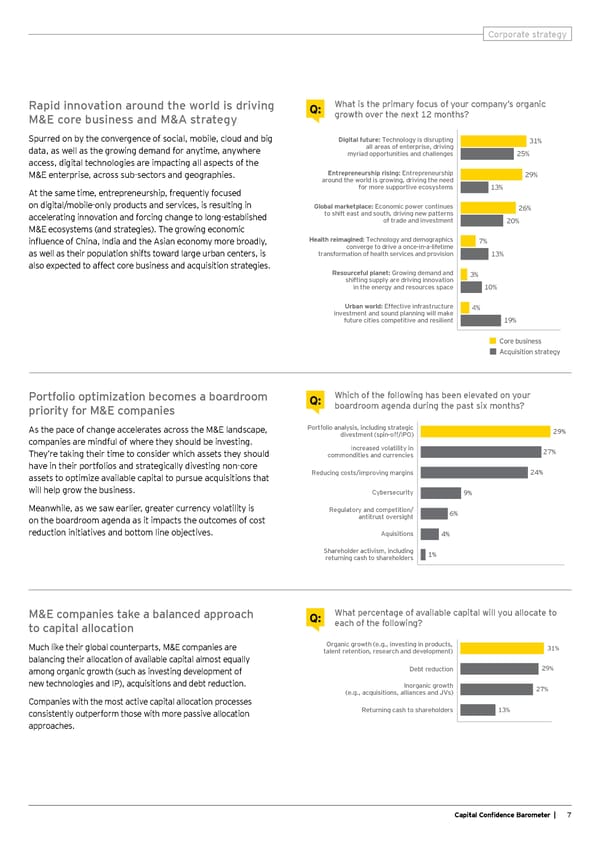Corporate strategy Rapid innovation around the world is driving Q: What is the primary focus of your company’s organic M&E core business and M&A strategy growth over the next 12 months? Spurred on by the convergence of social, mobile, cloud and big Digital future: Technology is disrupting 31% data, as well as the growing demand for anytime, anywhere all areas of enterprise, driving myriad opportunities and challenges 25% access, digital technologies are impacting all aspects of the M&E enterprise, across sub-sectors and geographies. Entrepreneurship rising: Entrepreneurship 29% around the world is growing, driving the need At the same time, entrepreneurship, frequently focused for more supportive ecosystems 13% on digital/mobile-only products and services, is resulting in Global marketplace: Economic power continues 26% accelerating innovation and forcing change to long-established to shift east and south, driving new patterns of trade and investment 20% M&E ecosystems (and strategies). The growing economic infl uence of China, India and the Asian economy more broadly, Health reimagined: Technology and demographics 7% converge to drive a once-in-a-lifetime as well as their population shifts toward large urban centers, is transformation of health services and provision 13% also expected to affect core business and acquisition strategies. Resourceful planet: Growing demand and 3% shifting supply are driving innovation in the energy and resources space 10% Urban world: Effective infrastructure 4% investment and sound planning will make future cities competitive and resilient 19% Core business 0 5 10 15 20 25 30 3 Acquisition strategy Portfolio optimization becomes a boardroom Q: Which of the following has been elevated on your priority for M&E companies boardroom agenda during the past six months? As the pace of change accelerates across the M&E landscape, Portfolio analysis, including strategic 29% companies are mindful of where they should be investing. divestment (spin-off/IPO) They’re taking their time to consider which assets they should Increased volatility in 27% commondities and currencies have in their portfolios and strategically divesting non-core Reducing costs/improving margins 24% assets to optimize available capital to pursue acquisitions that will help grow the business. Cybersecurity 9% Meanwhile, as we saw earlier, greater currency volatility is Regulatory and competition/ 6% on the boardroom agenda as it impacts the outcomes of cost antitrust oversight reduction initiatives and bottom line objectives. Aquisitions 4% Shareholder activism, including 1% returning cash to shareholders 0 5 10 15 20 25 30 M&E companies take a balanced approach Q: What percentage of available capital will you allocate to to capital allocation each of the following? Much like their global counterparts, M&E companies are Organic growth (e.g., investing in products, 31% balancing their allocation of available capital almost equally talent retention, research and development) among organic growth (such as investing development of Debt reduction 29% new technologies and IP), acquisitions and debt reduction. Inorganic growth 27% (e.g., acquisitions, alliances and JVs) Companies with the most active capital allocation processes consistently outperform those with more passive allocation Returning cash to shareholders 13% approaches. Capital Confi dence Barometer | 7
 Capital Confidence Barometer Page 8 Page 10
Capital Confidence Barometer Page 8 Page 10